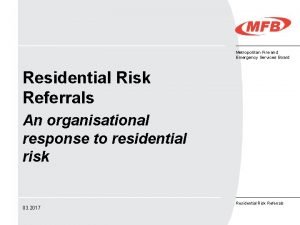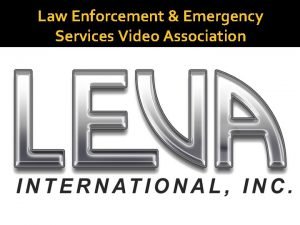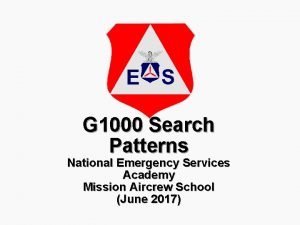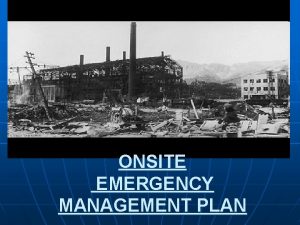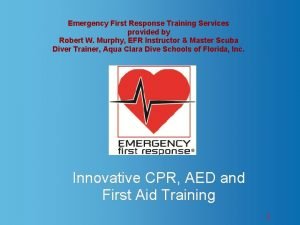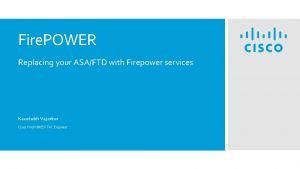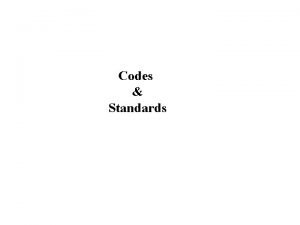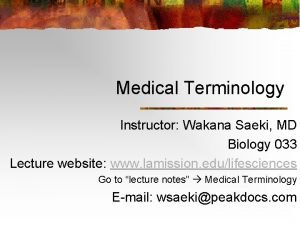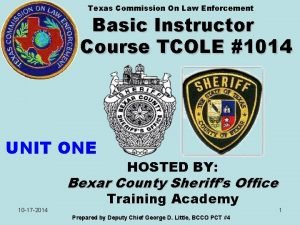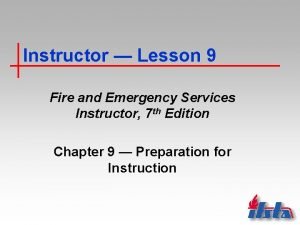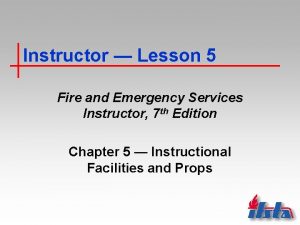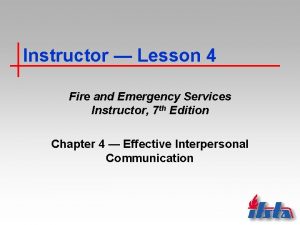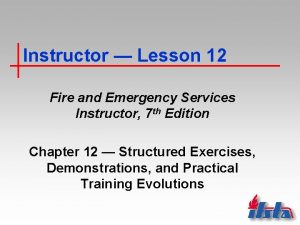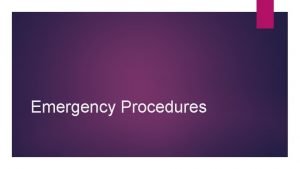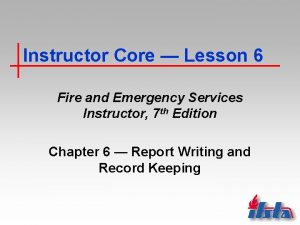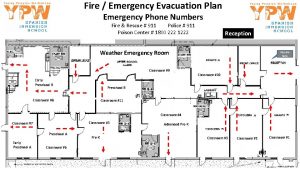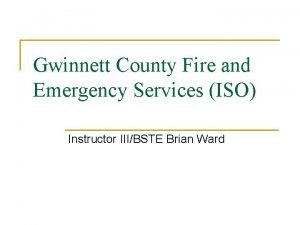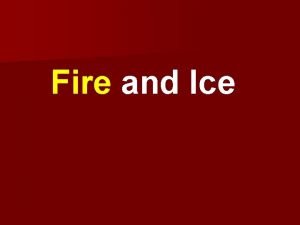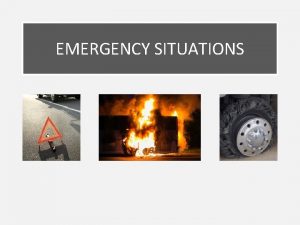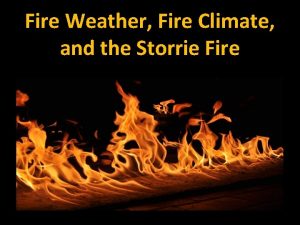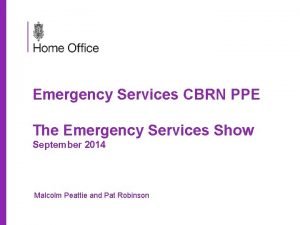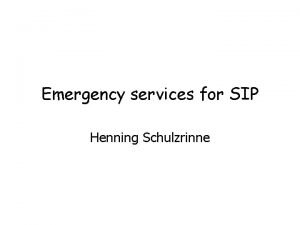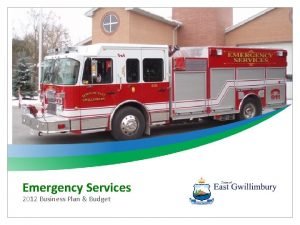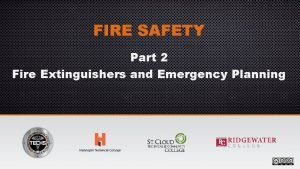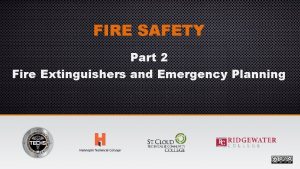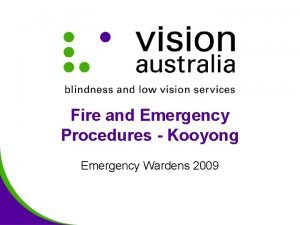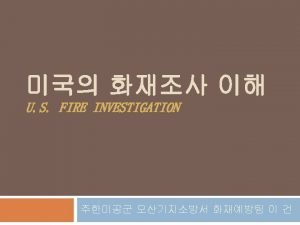Instructor Lesson 1 Fire and Emergency Services Instructor














































- Slides: 46

Instructor — Lesson 1 Fire and Emergency Services Instructor, 7 th Edition Chapter 1 — Challenges of Fire and Emergency Services Instruction

Learning Objectives 1. Identify obligations of fire and emergency services instructors to students, the organization, the profession, and themselves. 2. Identify accurate statements about ways that the instructor serves as a role model for students. 3. List characteristics of effective (Continued) instructors. Instructor 1– 1

Learning Objectives 4. Compare positive and negative teaching traits that can affect student impressions of instructors. 5. Identify solutions to challenges that instructors must meet. (Continued) Instructor 1– 2

Learning Objectives 6. Distinguish between the dos and don’ts involved in performing analyses, evaluating instructional facilities and props, managing diversity issues, identifying legal requirements and accommodations, and recognizing audience characteristics. Instructor 1– 3

Obligations to Students • • • Primary obligation is to the student Plan, develop, and deliver training Measure student’s knowledge and skills Use interpersonal communication skills Provide for the student’s safety Instructor 1– 4

Obligations to the Organization • Monitor changes and apply them to organizational needs • Research, observe, and participate in the planning, development, and implementation of training programs and curriculums (Continued) Instructor 1– 5

Obligations to the Organization • Provide the organization with the besttrained personnel possible • Act in an ethical manner at all times Instructor 1– 6

Obligations to the Profession • Provide the new recruit with a link to the heritage and tradition of the emergency services • Maintain a high standard of professionalism • Present a professional image both on and off duty Instructor 1– 7

Obligations to Themselves • Personal and internal obligations • Obligation to continue professional development Instructor 1– 8

The Instructor as a Role Model • • Should positively influence students Influence goes beyond the classroom Must always act as a positive role model Must be effective communicators Instructor 1– 9

Characteristics of Effective Instructors • Leadership abilities – Leadership styles – Lead by example – Leadership qualities (Continued) Instructor 1– 10

Characteristics of Effective Instructors • Strong interpersonal skills – Clarity – Sensitivity – Fairness Courtesy of Jocelyn Augustino, photographer, U. S. Federal Emergency Management Agency. (Continued) Instructor 1– 11

Characteristics of Effective Instructors • Subject and teaching competencies – Knowledge and experience – Must continually increase knowledge and skills (Continued) Instructor 1– 12

Characteristics of Effective Instructors • Desire to teach • Enthusiasm • Motivation (Continued) Instructor 1– 13

Characteristics of Effective Instructors • Preparation and organization – Assemble materials and equipment – Test equipment – Eliminate barriers to learning – Arrive early Instructor 1– 14 (Continued)

Characteristics of Effective Instructors • • • Ingenuity, creativity, and flexibility Empathy Conflict-resolution skills Fairness Personal integrity Instructor 1– 15

Teaching Traits • Honesty versus bluffing – Always be truthful and honest – Say “I don’t know, but I’ll find out. ” • Sincerity versus sarcasm – Students react positively to sincerity – Sarcasm places entire class on the defensive (Continued) Instructor 1– 16

Teaching Traits • Solutions versus complaints – Complaining creates a negative impression – Present with enthusiasm and optimism • Inspiration versus intimidation – Intimidation will not stimulate students – Inspiration will get the best results (Continued) Instructor 1– 17

Teaching Traits • Positive humor versus offensive humor – Humor can add emphasis or create interest – Make learning fun – Release tension – Use appropriately but cautiously Offensive humor is never appropriate! Instructor 1– 18

Meeting challenges • Multiple priorities – Identify priorities – Balance priorities – Establish priorities (Continued) Instructor 1– 19

Meeting challenges • Diverse students – Recognize, appreciate and respect differences – Broaden knowledge and understanding – Don’t expect all students to be the same – Treat each student as an individual (Continued) Instructor 1– 20

Meeting challenges • Organizational apathy – Be committed, find workable solutions – Provide effective, high-quality instruction (Continued) Instructor 1– 21

Meeting challenges • Multiple changes – Change is part of fire and emergency services – Accept, adapt, and promote change – Be an advocate of change (Continued) Instructor 1– 22

Meeting challenges • Cooperative relationships • Organizational promotion – Provide high-quality training externally – Provide training that meets current standards (Continued) Instructor 1– 23

Meeting challenges • Management directives – Be flexible and adaptable – Accept challenges – Strive to understand the challenge and cooperate and work for compromises (Continued) Instructor 1– 24

Meeting challenges • Safe training environments – Follow local, state/provincial and federal safety regulations – Assure students that safety is provided during practice evolutions (Continued) Instructor 1– 25

Meeting challenges • Professional development – Continuing education and professional development opportunities • Course schedules – Include training as integral to the mission statement – Be active in planning and scheduling (Continued) Instructor 1– 26

Meeting challenges • Funds and resources – Cooperative relationships – Seek new sources of funding • Qualified instructor recruitment – Assist in locating and recruiting individuals – Internal and external sources Instructor 1– 27

Analyses Dos and Don’ts • Do: – Collect information from multiple sources – Ensure information is accurate, reliable, credible, current • Don’t: – Depend on one source for information – Make recommendations without an analysis Instructor 1– 28

Instructional Facilities, Props, and Acquired Structures Dos and Don’ts • Do: – Adhere to safety requirements – Inspect facilities and props – Repair/replace props or facilities as needed Courtesy of Maryland Fire and Rescue Institute. (Continued) Instructor 1– 29

Instructional Facilities, Props, and Acquired Structures Dos and Don’ts • Do: – Have an ISO at high-hazard training – Require appropriate PPE – Use the adopted accountability system and the Incident Command System (ICS) at all training sessions (Continued) Instructor 1– 30

Instructional Facilities, Props, and Acquired Structures Dos and Don’ts • Do: – Emphasize safe operating procedures – Keep visitors and spectators at a safe distance – Have EMS personnel during live-fire and technical-rescue training (Continued) Instructor 1– 31

Instructional Facilities, Props, and Acquired Structures Dos and Don’ts • Don’t: – Violate safety requirements – Modify commercially produced props – Use donated props without inspecting, cleaning, and repairing them (Continued) Instructor 1– 32

Instructional Facilities, Props, and Acquired Structures Dos and Don’ts • Don’t: – Use an acquired structure that does not meet NFPA® 1403 – Perform training in inclement weather that creates additional hazards or risks Instructor 1– 33

Diversity Issues Dos and Don’ts • Do: – Show respect for all audience members – Adapt teaching methods – Encourage everyone to participate – Use language and examples relevant to all audience members (Continued) Instructor 1– 34

Diversity Issues Dos and Don’ts • Don’t: – Tell jokes, anecdotes, or stories that are inappropriate – Use inappropriate language – Permit audience members to use inappropriate language, jokes, anecdotes, or stories – Show favoritism – Openly criticize a student Instructor 1– 35

Legal Requirements and Accommodations Dos and Don’ts • Do: – Ensure accessibility – Provide a teaching environment that ensures best possible learning experience – Provide appropriate handouts or training aids as needed (Continued) Instructor 1– 36

Legal Requirements and Accommodations Dos and Don’ts • Don’t: – Assume all students are physically, mentally, and emotionally similar – Patronize students who have physical, mental, or emotional disabilities Instructor 1– 37

Audience Recognition Dos and Don’ts • Do: – Focus on the audience at all times – Watch for visual/audible indications – Ask questions and permit questions – Provide a comfortable environment – Provide interactive projects – Collect audience information (Continued) Instructor 1– 38

Audience Recognition Dos and Don’ts • Don’t: – Attempt to present all of the material in one session without rest breaks – Attempt to provide complex information without supplemental handouts – Patronize or talk down – Use job-specific jargon unless audience is (Continued) familiar with it Instructor 1– 39

Summary • Today’s fire and emergency services instructor has many challenges that must be met. The instructor has obligations to students, the organization, the profession, and themselves. (Continued) Instructor 1– 40

Summary • An instructor serves as a role model and can have a positive effect on students. Effective instructors possess many different characteristics and teach in a positive manner. Effective instructors are willing to find solutions to challenges. (Continued) Instructor 1– 41

Summary • Instructors must understand how to correctly undertake many tasks such as performing analyses. Instructors perform a vital role in today’s emergency services and the success of an organization depends partially upon having quality instructors. Instructor 1– 42

Discussion Questions 1. What are some of the obligations an instructor has to students, to the organization, to the profession, and to themselves? 2. Why should an instructor always do what they are telling others to do? 3. What are some characteristics of (Continued) effective instructors? Instructor 1– 43

Discussion Questions 4. Should an instructor ever “bluff” their way through a question? Why or why not? 5. Is offensive humor ever appropriate? 6. What is one challenge instructors face and a solution to that challenge? (Continued) Instructor 1– 44

Discussion Questions 7. What is one do and one don’t for each of the following: – Performing analyses – Evaluating instructional facilities and props – Managing diversity issues – Identifying legal requirements and accommodations – Recognizing audience characteristics Instructor 1– 45
 Metropolitan fire and emergency services board
Metropolitan fire and emergency services board Ac 61-98 plan of action
Ac 61-98 plan of action Law enforcement and emergency services video association
Law enforcement and emergency services video association Reichstag fire who was the fire starter
Reichstag fire who was the fire starter Damper interface panel
Damper interface panel Uttar pradesh fire prevention & fire safety rules, 2005
Uttar pradesh fire prevention & fire safety rules, 2005 Ire fire fire rwi
Ire fire fire rwi Fire extinguisher parts
Fire extinguisher parts National emergency services academy
National emergency services academy Onsite emergency services
Onsite emergency services The importance of training
The importance of training Reimage firepower module
Reimage firepower module The virtual instructor
The virtual instructor Codes standards and practices lesson 4
Codes standards and practices lesson 4 Tipos de participantes en cursos de capacitación
Tipos de participantes en cursos de capacitación Basic instructor course tcole
Basic instructor course tcole Basic instructor course texas
Basic instructor course texas Basic instructor course texas
Basic instructor course texas Pepperball launcher nomenclature
Pepperball launcher nomenclature Neither of my two suitcases are adequate for this trip
Neither of my two suitcases are adequate for this trip Instructor vs teacher
Instructor vs teacher Cisco certified instructor
Cisco certified instructor Mptc firearms
Mptc firearms Tcole advanced instructor course
Tcole advanced instructor course Basic instructor course #1014
Basic instructor course #1014 Nfpa 1403
Nfpa 1403 Tp 12863
Tp 12863 Instructor operating station
Instructor operating station Catia instructor
Catia instructor Instructor
Instructor Tcole 1014 basic instructor course
Tcole 1014 basic instructor course Usmc jrotc vacancies
Usmc jrotc vacancies Nrp instructor toolkit
Nrp instructor toolkit Utp cable
Utp cable Cbrf training registry
Cbrf training registry Nra certified instructor logo
Nra certified instructor logo Naismith was an instructor of
Naismith was an instructor of Please clean your own room
Please clean your own room Tcole advanced instructor course
Tcole advanced instructor course Tcole advanced instructor course
Tcole advanced instructor course Jrotc marksmanship instructor course online
Jrotc marksmanship instructor course online Optical illusion
Optical illusion Calcaneum plural
Calcaneum plural Basic instructor course #1014
Basic instructor course #1014 Basic instructor course tcole
Basic instructor course tcole Delmar cengage learning instructor resources
Delmar cengage learning instructor resources Instructor office hours
Instructor office hours
